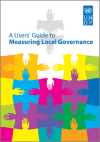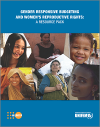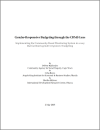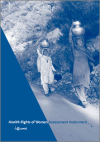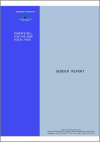FOUND 16
This Guide was preared by Alexandra Wilde, Shipra Narang, Marie Laberge and Luisa Moretto UNDP Oslo, 2009.
This manual published by United Nations Human Settlements Programme (UN-HABITAT) in 2008 is designed to assist training institutions in mainstreaming gender concerns in local government capacity-building and in training related to human settlements as conducted by Habitat Agenda partners.The Sourceb
The sourcebook for Trainers was published by the United Nations Human Settlements Programme (UN-HABITAT) - 2008.
This resource pack authored by Debbie Budlender provides relevant knowledge to facilitate mainstreaming gender-responsive approaches into reproductive health programmes, and the inclusion of specific aspects of gender inequality and disadvantage into national policy frameworks.
The paper suggests how the Community-Based Monitoring System (CBMS), developed and implemented in 14 countries over the last ten years with financial support from the Canadian International Development Research Centre (IDRC), can be used to facilitate gender-responsive budgeting (GRB) at the local l
The Health Rights of Women Assessment Instrument (HeRWAI) is a tool developed by the Humanist Committee on Human Rights (HOM) in 2006 to enhance lobbying activities for better implementation of women's health rights.
The Global Programme Increasing Accountability in Financing for Gender Equality’ was developed to increase financing for national gender equality commitments in sixteen countries and to strengthen government and donor accountability on financing decisions and practices.
This publication results from widespread participation in a UNDP network discussion entitled Towards a "Local Governance and Development Agenda: Lessons and Challenges".
The purpose of this paper, prepared by Raman Sohal Research Officer, International Development Research Centre, June 2005, is to present an overview of the existing and potential approaches and tools for identifying gender gaps at the local level.
The objective of this report is to review and analyze the impact of the major sectoral programmes to identify some areas of intervention to better take into consideration the gender dimension in the design of public policies.Six new government departments which have adopted gender-sensitive budgetin
